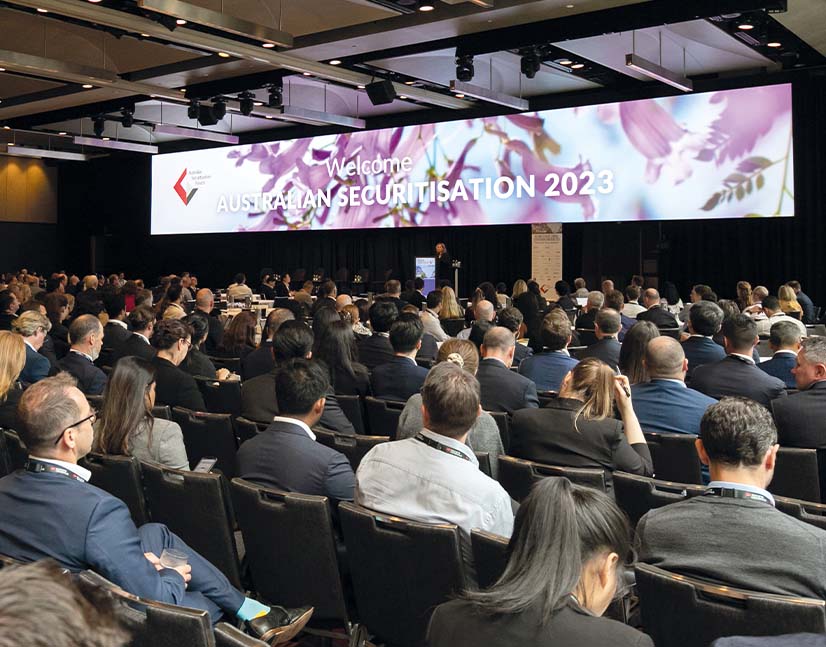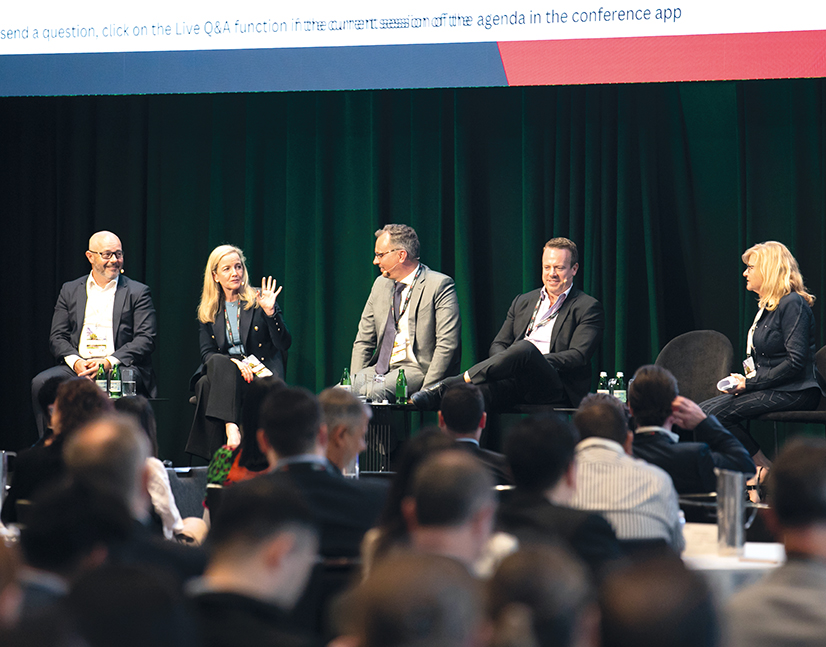
Nonbank mythbusting
The nonbank lending sector represents a significant portion of the Australian securitisation market. While the volume and frequency of deals indicates an increasing level of investor comfort with the sector, myths pertaining to nonbanks’ lending practices persist and could inhibit future funding growth.
Matt Zaunmayr Senior Staff Writer KANGANEWS
Nonbanks have come to be an integral part of the overall Australian securitisation market. The sector printed record volume in 2017 with more than A$21 billion (US$14.1 billion) of deals priced. While volume in 2018 was slightly down, the year represented the nonbanks’ greatest-ever proportion of market share at around 60 per cent of total public Australian dollar securitisation volume.
According to KangaNews data, by the beginning of September 2019 nonbanks had priced more than A$12 billion of securitisation deals in 2019, roughly half the market’s total volume (see chart 1).
Many nonbanks have limited funding options outside of securitisation so their growth potential is inherently tied to their ability to raise volume from public securitisation markets. Institutional-investor acceptance of nonbank lending, verification and risk-management practices is therefore critical.
Nonbank securitisation volume corresponds with a significant increase in lending origination in the nonbank sector. This has been driven primarily by regulatory and other pressures reducing the scope of the borrower market banks are pursuing and thus opening market share to nonbanks.

An Australian nonbank sector that was on the canvas after the financial crisis has rebounded. While its mortgage-market share – at around 5 per cent of total housing credit according to the Reserve Bank of Australia – is still low, its ambitions are greater. To achieve these, nonbanks will need a supportive funding market that is comfortable with their business models.
Misconceptions and myths regarding the nonbank sector persist, though. The financial crisis cast a shadow over securitisation and, in particular, securities backed by nonprime loans – in other words, the stock in trade of many nonbanks – even when such reputational damage was not warranted.
Terms like “shadow bank” and “subprime” have been remarkably sticky in spite of the sector’s best efforts to distance itself from the practices which led to the financial crisis in the US – and the resilience of Australian nonbank securitisation product before, during and after the crisis. Market participants that are engaged with nonbank issuers tend to be comfortable that Australian nonbank lending is not comparable with pre-crisis subprime.
Defining nonbank lending
Part of the problem appears to be a lingering negative perception of so-called shadow banks. The term itself suggests that an organisation is undertaking the operations of an authorised deposit-taking institution (ADI) beyond the purview of regulatory scrutiny.
By definition, a nonbank is not an authorised deposit-taking institution (ADI). While some, such as La Trobe Financial, take retail investment through a funds-management arm, they do not take retail deposits in the way a bank does. This is an important distinction as it means there are no depositors whose savings could be collateral damage in the event of a nonbank institution running into trouble.
Like ADIs, nonbanks are credit providers but they vehemently reject the idea that they operate in the shadows. Peter Riedel, Melbourne-based chief financial officer at Liberty Financial, points out that all lenders in Australia must obtain an Australian Credit License (ACL) from the Australian Securities and Investments Commission (ASIC).
“Irrespective of the way in which a lender is funded, their capital strength or their formation, they need this license. It is indistinguishable between banks and nonbanks,” Riedel adds.
ASIC’s responsible-lending laws apply uniformly to any institution with an ACL. These laws require lenders not to provide “unsuitable” credit to consumers via obligations to make reasonable enquiries about the borrower, to assess whether proposed lending is unsuitable and to provide a written assessment of this suitability.
Martin Barry, chief treasurer and strategy officer at La Trobe Financial in Sydney, explains that the enquiry and verification standards employed by his company meet these standards and then some. “We assess a borrower’s capacity to repay a loan using a disciplined and thorough process. Often this involves lengthy telephone interviews with the applicant and the applicant’s employer, plus receiving physical evidence such as a declaration from their accountant if they are self-employed, and detailed asset-and-liability statements so we can properly verify income and expenses.”
Indeed, the fact that nonbanks can and do undertake specialist assessments on nonstandard – literally nonconforming – borrowers is both what provides their opportunity to capture market share and, the lenders say, the foundation of their asset quality.
By the necessary adherence to responsible-lending laws, true “subprime” loans – that is, “NINJA” loans to customers with no income, no job and no assets – are not a feature of Australian nonbank lending. Lending to highly credit-impaired borrowers is an infinitesimally small part of the market, Barry adds.
He explains that La Trobe Financial, like its nonbank peers, closely monitors the changing regulatory and consumer environment to ensure its approach continues to meet or exceed industry best practice in relation to the protection of consumers and meeting community expectations.
With a changing financial-services regulatory and competitive environment, Barry says nonbanks such as La Trobe Financial are becoming increasingly relevant. “We are very clear about the niche markets we serve, bringing choice and competition to those identified markets in a responsible and sustainable way.”
Evolving landscape
It is not even accurate to assume that nonbank equals nonprime lending. Nonbanks have come to occupy almost all parts of the lending market. Several maintain prime-lending operations which require multiple benchmark securitisation transactions per year. In many cases prime and near-prime loans comprise the majority of nonbank books.
It is true that banks are more restrictive than they once were on who qualifies as a prime customer, and that many who previously would have qualified for a bank loan are now being serviced by the nonbank sector.
This is particularly the case for investor loans. The Australian Prudential Regulation Authority only recently lifted lending restrictions on this segment for ADIs and it has become a major growth sector for the nonbanks (see box below). Dylan Bourke, portfolio manager at Kapstream Capital in Sydney, says the migration of these borrowers has been credit positive for nonbank lenders, though.
“Many investor borrowers previously would have been bank customers, they are low risk for nonbanks and have contributed to an overall improvement in the quality of most nonbank loan pools. This is particularly true of nonconforming pools, as nonbank lenders focus more on investor loans and reduce exposure to borrowers with adverse credit histories,” Bourke says.
Nonconforming lending, broadly defined, is any lending that falls outside of bank prime criteria. It is likely where confusion around subprime lending comes into play. As Barry explains, far from the severely credit-impaired subprime customer of the pre-crisis US market, it does not take much for a customer to fall into the nonconforming category as defined in Australia. Being self-employed or having missed a payment on a phone bill are often enough cause to be turned away from traditional major lenders, he says.
“At La Trobe Financial we work with the borrower to find solutions. If there is a minor credit blemish, we can work out exactly what happened and, if we are comfortable it was a one-off or the borrower’s circumstances have changed, we are usually happy to lend – subject to certain conditions,” Barry says.
Nonconforming is not the same as subprime or poor quality, in other words. Barry gives the example of borrowers who wish to invest in property through a self-managed superannuation fund (SMSF), who have super-prime characteristics but are often not accommodated by major banks.
“Currently banks will not lend to an SMSF borrower because it is a more complex lending arrangement via a trust which requires significant additional investment in credit-underwriting resources,” Barry comments. “But it is a perfectly legitimate practice to manage retirement savings. There is currently only a handful of nonbank lenders servicing such SMSF loans for what is an approximately A$800 billion industry.”
Servicing borrowers that fall outside increasingly narrow, cookie-cutter bank credit criteria is the crux of the nonbanks’ value proposition. These borrowers are not poor-quality credit and in most cases are far from the colloquial understanding of a subprime borrower.
Nonbank pool characteristics
While the pools of loans represented in nonbank securitisation are highly varied on account of the broad suite of institutions and products engaged in the sector, some key similarities come through.
Limiting loan-to-value ratio (LVR) is a typical risk mitigant employed by lenders in securitisation pools. Nonbanks will typically have a slightly higher LVR in their prime product than banks.
Narelle Coneybeare, senior director, structured finance at S&P Global Ratings (S&P), says this has been exacerbated in the 2018 pool vintage by nonbanks’ typically higher exposure to investor and interest-only loans.
According to Coneybeare, investor loans in 2018 were around 40 per cent of nonbanks’ prime books, whereas they were around 30 per cent of all Australian prime home lending. The nonbank prime book in 2018 contained around 35 per cent interest-only loans against around 20 per cent for the entire prime book.
She adds, though, that S&P does not see these numbers as a cause for concern. Rather, they are a result of the ongoing shift of these borrowers from the bank to the nonbank sector. Coneybeare says: “Our view is that any incremental risk is accounted for in the structural features of nonbank residential mortgage-backed securities.”
Ilya Serov, associate managing director at Moody’s Investors Service, says the proportion of investor and interest-only loans in nonbank pools has stabilised in 2019 and even reversed in some cases. He adds that even though overall nonbank exposure to these loans remains elevated, it tends to be prime business.
“The important question to ask is around risk layering. If a loan has high LVR and is also nonconforming or alternative documentation this may be of greater concern. But in most circumstances this is not the case. Most of these loans are in the nonbank prime space. So far, it has not translated into any uptick in arrears rates or losses,” says Serov.
Housing-market exposure
With the price correction in the Australian housing market over the last two years being largely concentrated by geography and dwelling type, the exposure of lending institutions to certain areas has come under the microscope.
Coneybeare says while some regional banks have a high geographic concentration, nonbank pools tend to be well diversified and concentration issues are not evident. Furthermore, she adds that inner-city apartments have only ever made up around 1 per cent of the aggregate prime book in Australia.
Martin Barry, chief treasurer and strategy officer at La Trobe Financial, says his company will consider lending against apartments but all loans are priced appropriately for risk.
“If it is a high-rise apartment in the inner city the LVR will be adjusted lower given the security compared with a block of 10 apartments in a suburb surrounding the CBD, for example. There are localised problems with apartments but as a speciality lender we can navigate these by limiting exposure to particular buildings and areas.”
While there has been a managed retracement of overall house pricing in Australia, Barry says the majority of price movement has been in the higher-end property market. The bulk of nonbank exposure is in the median, where price volatility has been limited and in some instances prices have increased.
Reflecting risk
While the portfolio-risk profile of many nonbanks has likely become safer in recent years as they accommodate more near-prime and prime borrowers, the nonbank sector generally still pays a spread premium above ADIs for its securitisation transactions (see chart 2).
According to KangaNews data, nonbank triple-A prime senior securities typically price around 20 basis points wide of ADI prime transactions. This is most recently exemplified by Resimac’s Premier Series 2019-2 transaction, which closed on 23 August, for which the class A2 notes priced at 115 basis points over three-month bank bills.

On the day prior, Bank of Queensland (BOQ) printed the Class A notes of its Series 2019-1 REDS Trust at 98 basis points over three-month bank bills. Both note classes had 2.9 years weighted-average life, and were rated triple-A and backed by prime collateral.
The spread differential between bank and nonbank prime RMBS transactions is relatively consistent. Ilya Serov, associate managing director at Moody’s Investors Service in Sydney, says the higher mortgage interest rates these spreads correspond to is the first line of defence against risk for investors in nonbank RMBS.
Bourke confirms that the spread differential between bank and nonbank securitisation transactions does not reflect a perception of greater default risk, nor does it relate to the nonbanks’ origination and verification practices.
“The spread differential reflects the fact that nonbanks are typically smaller, unrated entities. This means more price volatility due to limited funding options during risk-off periods and less secondary liquidity.”
He also acknowledges, however, that nonbank liquidity has improved in recent years as the issuers gain greater brand recognition.
There are ways other than spread in which nonbanks seek to assuage any investor concerns over liquidity and volatility risk. Riedel says the credit enhancement offered in nonbank securitisation structures more than makes up for any perceived incremental risk relative to ADI issuance.
“In aggregate, the losses from nonbank securitisation are slightly higher but the credit enhancement provided in nonbank securitisation is more than sufficient to eliminate arguably all of the credit risk. Liberty’s annualised losses typically range between 0.5 and 1.5 basis points pre-LMI [lender’s mortgage insurance] recovery. But there is usually 3,000 basis points of credit enhancement provided to the triple-A investor,” Riedel reveals.
Narelle Coneybeare, senior director, structured finance at S&P Global Ratings in Sydney, tells KangaNews that credit enhancement provides a significant buffer for investors in nonbank RMBS. “Around 45 per cent of our nonbank ratings have more than twice the necessary credit enhancement, with the benchmark for nonbank prime deals being 12-15 per cent in the senior notes,” she says.
An S&P report published on 30 July 2019 shows that the level of credit support coverage across nonconforming RMBS transactions is also typically much higher than the rating agency’s minimum requirement. More than half of triple-A rated nonconforming securities have at least three times the minimum (see chart 3).

Proof of the pudding
The higher margins and credit enhancement of nonbank securitisation transaction structures may be more to do with compensating investors for perceived liquidity and funding considerations than the quality of underlying assets. In fact, the lending practises of nonbanks tend to be vindicated further by the performance of their collateral.
Indicators such as arrears and losses historically favoured bank securitisation. However, Coneybeare says a key trend that has developed in recent years is a lower level of nonbank arrears in securitisation pools compared with banks.
Serov says the co-mingling of prime and nonconforming mortgages in nonbank securitisation pools is reflected in the overall arrears performance, which has remained broadly stable. The move to more prime lending from most nonbank originators has led to an improvement in the average quality of nonbank portfolios.
Furthermore, Serov tells KangaNews that a responsible approach to loan-to-value ratio (LVR) is a further mitigant of nonbank losses. He says there is a higher proportion of high- LVR loans in some nonbanks books but the averages are less of a concern and there have not been many defaults.
“Our nonconforming loss tracker is currently at around 4 basis points on average, which reflects the LVR nonbanks originate in their businesses,” Serov comments. “The worst time for losses in the nonbank space was during the financial crisis, when they went to 60-70 basis points. But every vintage since then has been well below 10 basis points.”
Natasha Vojvodic, senior director and head of Australian and New Zealand structured finance at Fitch Ratings in Sydney, says the “cure rate” between the 1-29 day and the 30-60 day arrears buckets tends to be higher for nonbanks than ADI lenders. She points out that this could reflect a more proactive approach to managing customer arrears or a function of nonbanks tending to have less volume of borrowers to manage.
According to the Fitch Ratings Dinkum Index, bank and nonbank prime RMBS prepayment rates have historically tracked a similar path, particularly in the years following the financial crisis. Vojvodic says prepayment rates of bank and nonbank prime mortgages track closely due to the similarity of products on offer. This homogeneity is thanks to the competitive environment in Australian lending.

nonbank Yearbook 2023
KangaNews's eighth annual guide to the business and funding trends in Australia's nonbank financial-institution sector.

WOMEN IN CAPITAL MARKETS Yearbook 2023
KangaNews's annual yearbook amplifying female voices in the Australian capital market.













